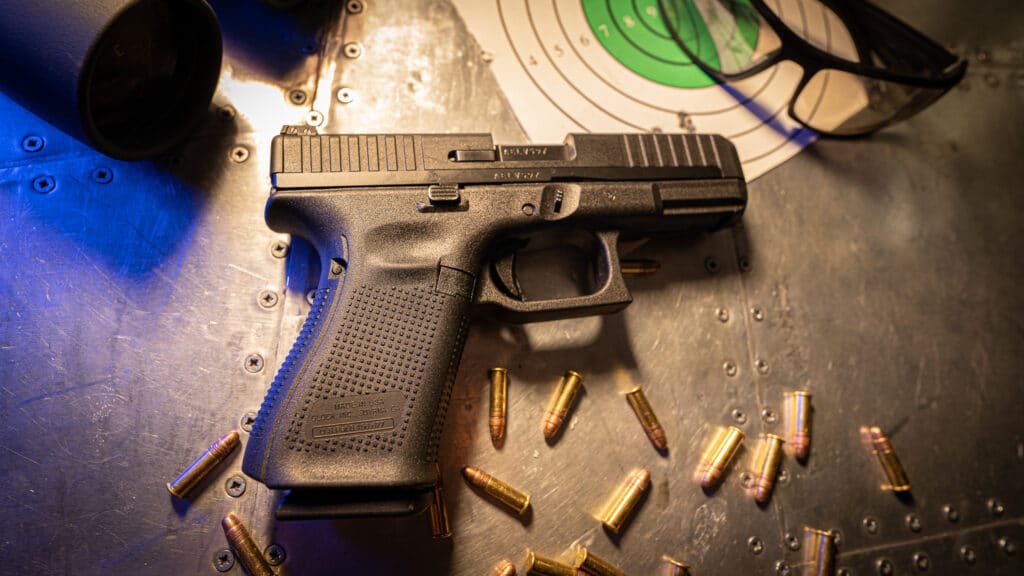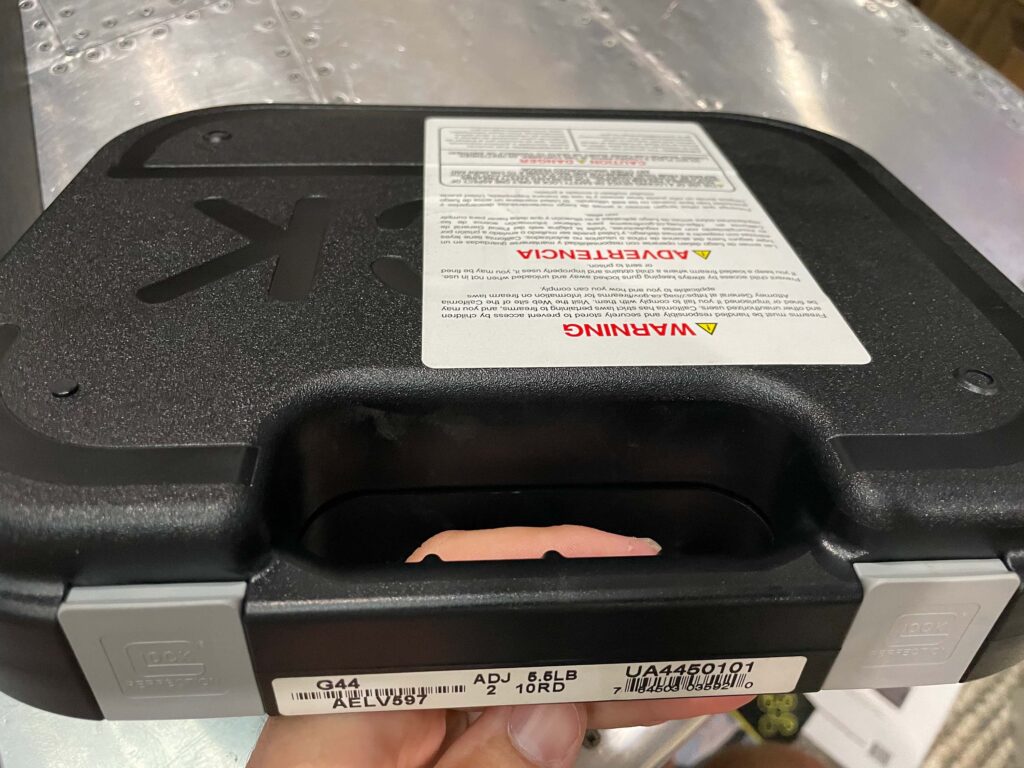Secret Service Handguns: The exact models they use

In 2019, the US Secret Service chose the Glock G19 Gen 5 MOS to be their new service pistol. It replaced the long-standing Sig P229 as the agency’s standard-issue sidearm. The move represents an acknowledgment by law enforcement that simpler is better and is also part of a trend back toward the 9mm Luger.
The Glock G19 Gen 5 MOS is chambered in 9mm Luger, has a 4″ barrel, and carries 15 cartridges in the magazine. It is considered compact but is on the larger end of pistol marketed as such. MOS stands for Modular Optics System and means the pistol is ready to accept a red dot sight right out of the box.
Did the Secret Service make the right choice to replace the Sig P229 chambered in .357 Sig with the Glock G19 chambered in 9mm Luger? In my opinion, they did. Keep reading to hear my thoughts on both pistols.
Glock G19 Gen 5 MOS
The Glock G19 is very much a one-size-fits-all pistol. Although being described as “compact” by Glock, it’s very much a full-size pistol. It can be concealed, but so can other full-size pistols for that matter. The Glock G19 is a good size for plain-clothes law enforcement officers, being neither too big nor too small.
Plainclothes officers are generally less concerned about people seeing their firearm than are most concealed carry permit holders.
Being a polymer-framed pistol, it is very lightweight. In fact, Glock pistols are some of the most lightweight polymer-framed pistols there are, with the Glock G19 only weighing 23.81 ounces unloaded. That makes it 8.6 ounces lighter than the aluminum-framed Sig P229.
With a 15-rounds magazine being standard, the Glock G19 is comparable to many full-size service pistols in capacity. The Glock G19 is able to use the 17-round magazines used by the Glock 17 and 34. The 15 round magazines are also able of using extended baseplates to bring the capacity up to 17. This solution is more visually pleasing.
The sights on Glock pistols are “meh”, but they aren’t bad. They are made of plastic, but they aren’t fragile. I don’t care for the open-ended box sighting system, but it isn’t less functional than standard 3-dot sights. With the slide being cut for a red dot, there is less of a need to change them out.
The 5th generation Glocks are also a substantial improvement in ergonomics over the more common 3rd generation. Gone are the finger grooves and the slick texturing. While still behind other pistols in ergonomics, Glock has at least improved to above-average in this department.
The Glock G19 is a striker-fire pistol, meaning there is only a single consistent trigger pull for every shot. While this pistol has no externally disabled safety, the pistol has an insert on the trigger that needs to be depressed before it can be pulled. Glocks also have internal safety features that can be read about here.
Sig Sauer P229
The Sig P229 is an aluminum-frame pistol and is also one of the larger “compact” models available. The Secret Service models are chambered in .357 Sig and have a standard magazine capacity of 12 rounds. They weigh 32.4 ounces, which is still very reasonable in weight.
When comparing the Sig P229 to its bigger brother the Sig P226, the differences are very minimal. They feel slightly different in the hand, but not much size-wise has changed.
The Sig P229 is a more refined pistol, with much more labor going into its production. The machined frame, the fit between it and the slide, and the solid aluminum trigger all make for a better feeling, and more expensive, pistol.
The Sig P229 the Secret Service chose was also chambered in an expensive cartridge, the .357 Sig. The .357 Sig is a 40 S&W case necked down to a 9mm bullet. The .357 naming tried to draw a parallel between it and the venerable .357 Magnum, a reference to its velocity potential.
While it has more velocity and energy when compared to any 9mm Luger +P loading, the increased effectiveness is debated. The cost per round though is not up for debate, as the .357 Sig is expensive to train with. Now that many agencies are moving back to 9mm Luger, the Secret Service is doing the same.
When selecting the model, the Secret Service chose the P229 with the DAK trigger as opposed to the traditional DA/SA models. DAK, an acronym for Double Action Kellerman, is a modified double action only trigger. The hammer is still cocked back by the trigger but is lighter than a traditional double action.

What About the Glock G47?
The Glock G47 is a government exclusive, meaning there are no civilian sales. It is supposed to be a combination of a G45 frame and a full-size slide. To me, it sounds like a Glock G17 with a slightly different frame. The G45 is, after all, a 9mm Luger pistol with a capacity of 17 rounds.
Rest assured, it’s a Gen 5 Glock, so it will come with the standard Glock trigger, sights, and ergonomics. Some people may be unhappy it’s not available for civilian purchase, but nothing about the pistol is unique compared to the many other Glock options.
So Which is Better?
Better is a subjective term, so take this into consideration when you read my conclusion. For a service pistol, the Glock G19 and G47 are better. The 9mm Luger offers practice ammunition that is far cheaper than .357 Sig. Increasing shooting skills is more important than any minor firearms difference.
The Glock pistols are also lighter in weight, hold more ammunition per magazine and have a greater variety of holsters and accessories available. 9mm Luger has also proven itself to be better than it was in the late 80s and early 90s. Ammunition technology has improved and the 9mm Luger has increased greatly in its ability to expand and penetrate.
However, if the question was which pistol is more comfortable to hold, and had more effort put into its construction, the Sig P229 would be the winner. They are great feeling pistols in the hand. But as a service pistol, issued to a variety of people with different levels of firearms experience, the Glocks are the better option.
